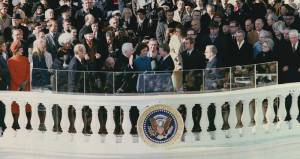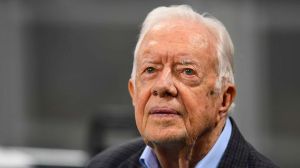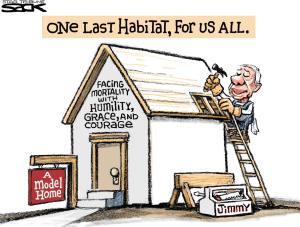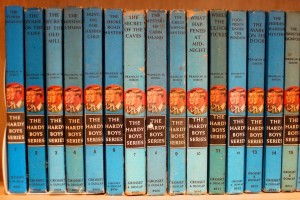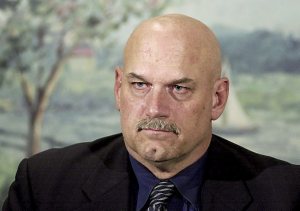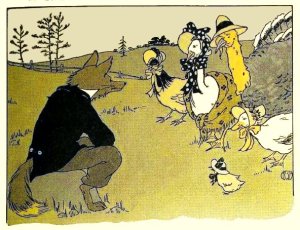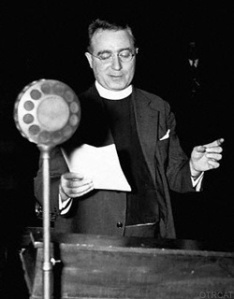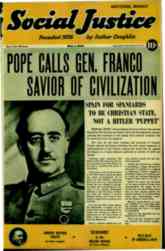Annie, who for many, many years now has lived in Ottawa, noted that one of her traditions is that she volunteers “at a soup kitchen at an Anglican church just up the street from my place.”
That’s the kind of tradition, it would seem to me is well worth emulating, although I am sorry to say, I haven’t come close. Way back in 2008, the second Christmas I lived in Thompson, Manitoba, I volunteered in the kitchen at St. Joseph’s Ukrainian Catholic Hall for the Thompson Community Christmas Dinner, which has been an annual holiday staple here since 1991, where folks are treated to a free turkey dinner with all the trimmings on Dec. 25. Another year, Bobbi Montean oversaw Jeanette and me, and a number of other volunteer drivers, delivering Christmas dinners to shut-ins who couldn’t make it out to St. Joe’s. What I remember best about that experience was that it was dark, very dark, and I was still relatively new to Thompson in terms of knowing the geography (a fact I apparently didn’t know until we started the deliveries), and it was brutally cold. But what am I saying. It is brutally cold every year (or at least it is in my memory)!
A couple of years ago, I also peeled some potatoes under the watchful eye of Nelson Pruder for the community dinner Christmas Eve, and a few other times Jeanette and I have I’ve turned out to take part in and enjoy some ad hoc music-making, and enjoy a turkey plate ourselves Christmas day.
Throughout the last 28 years, local members of the Canadian Mental Health Association (CMHA), St. Andrew’s Presbyterian Church, former Chicken Chef owner Dale Shantz, the Pruder family, particularly Emily, as well as Harlie, and Nelson, who took over from the local branch of the Canadian Mental Health Association (CMHA) in organizing the annual Christmas Day event in 2013, and for the last two years, Mayor Colleen Smook, in her capacity as a private citizen, not as mayor, although if you know Colleen and you know the North, the two are kinda inseparable in some ways, and one of her daughters, Sharon Cordell, and her daughter, Tori Jade Cordell, have led the Thompson Community Christmas Dinner preparation and cooking effort. The dinner ends up feeding around 180 people each year. I worked with Sharon briefly a few years ago in what is now the Wellington & Madeleine Spence Memorial Library on the University College of the North’s Thompson Campus, so I am not at all surprised at this. Like Colleen, Sharon is all about community, albeit with perhaps a bit of an iron fist in a velvet glove activism when necessary to get people’s attention that something is important.
Christmas traditions are important, but not immutable, I think. To some extent, they seem to me to be dependent on where we are both in life, as it were, and geography, which even in a very virtual world, still matters.
One of the earliest family traditions I can recall is that of celebrating my grandfather, William Barker, same name as my dad’s, Christmas day birthday every Dec. 25. My grandfather had what I thought of as his “plant room” in a second-floor room of my grandparents’ home on Verdun Road in Oshawa. I spent a fair bit of time in it in the mid-1960s. It had large southwest facing windows, ideal for growing plants inside in the winter. My grandmother, who died in January 1965 when I was seven, lived long enough to instill a life-long love of Christmas fruitcake in me, whether it be from the monks of Le Magasin de l’Abbayea Val Notre-Dame in Saint-Jean-de-Matha, Quebec, or my local Safeway’s honey and ground almond marzipan-icing topped fruitcake, a love I was astonished to learn later in life is not shared by everyone. My grandfather, who died when I was 10 in September 1967, was hard of hearing, so from him I learned to speak loud enough to be heard even as a child, which has proved useful over the years. I also learned to love the raspberry canes in his garden and simplicity from my grandfather Barker.
My dad, after reportedly being a bit of a hell-raiser in the 1940s and 1950s – especially up at our Pop-In Cottage on Lake Simcoe – when he got together with his favourite brother-in-laws – Ray Seager, Fred Porter and Pat O’Leary – laid off the booze after his second bout of kidney stones, he told me years later.
But I well remember as a boy going into the Liquor Control Board of Ontario (LCBO) on Richmond Street West at Centre Street in Oshawa the Saturday before Christmas every year to pick up a mickey of Canadian Five Star whisky (and in those days in the 1960s and 1970s the bottle actually had a plastic five-point star on the outside, not some chintzy image-only on the label) for my dad to have on hand for Uncle Ray, Uncle Fred and Uncle Pat Christmas night, when our family would gather at our home at 537 Nipigon Street in Oshawa to celebrate my grandfather’s birthday with a party. In those days before customer self-serve and wine and liquor lists, dad would peruse the list, even though he always picked up the Canadian Five Star whisky, but didn’t pick it up before he filled out his order slip by pen or pencil and handed it to the clerk at the counter, who would then purposefully retrieve it from some pigeonhole in the mysterious area at back.
As I’d say many years later living in Nova Scotia and New Brunswick, “we had ourselves a time” at those long ago Christmas birthday parties!
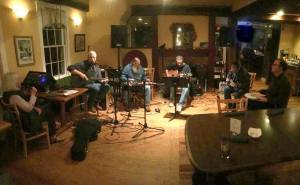
 From 1978 to 1991, I spent many a happy Christmas ensconced at the Dell family’s Noone House, built in 1820, on what is now Old Jaffrey Road in Peterborough, New Hampshire, or enjoying a hot toddy in nearby Fitzwilliam, New Hampshire at the Fitzwilliam Inn, built in 1796 as a stop on the old coaching road system between Boston and points north. I still marvel at the memory of opening Christmas presents for the first time in the Noone House library. A room completely given over to being a library in a private family home was almost beyond the ken of my imagination in 1978. While it seems like another lifetime ago now, and perhaps was in many respects, my memories of the love and hospitality extended to me by Heather, and her family, including her sister, Sara, brother Chad, and her parents, Ed and Carol Dell, remain among the post precious I cherish and treasure to this day. It is often said that grace is an “unmerited favour” or gift from God. My Christmas holiday time spent in New England over those 14 years as a young man from my early 20s to mid-30s is surely testament to that.
From 1978 to 1991, I spent many a happy Christmas ensconced at the Dell family’s Noone House, built in 1820, on what is now Old Jaffrey Road in Peterborough, New Hampshire, or enjoying a hot toddy in nearby Fitzwilliam, New Hampshire at the Fitzwilliam Inn, built in 1796 as a stop on the old coaching road system between Boston and points north. I still marvel at the memory of opening Christmas presents for the first time in the Noone House library. A room completely given over to being a library in a private family home was almost beyond the ken of my imagination in 1978. While it seems like another lifetime ago now, and perhaps was in many respects, my memories of the love and hospitality extended to me by Heather, and her family, including her sister, Sara, brother Chad, and her parents, Ed and Carol Dell, remain among the post precious I cherish and treasure to this day. It is often said that grace is an “unmerited favour” or gift from God. My Christmas holiday time spent in New England over those 14 years as a young man from my early 20s to mid-30s is surely testament to that.
As Frank Sinatra sang so famously in 1968 in Jacques Revaux’s “My Way,” written a year earlier in France, “Regrets, I’ve had a few,” there will always be a tinge of sadness for the remembrance of things past. But I am also reminded of the words of C.S. Lewis, perhaps the finest apologist for Christianity of the 20th century, from the 1993 movie Shadowlands, where he says, “The pain now is part of the happiness then. That’s the deal.”
Coincidentally, if there are really coincidences, Chad Walsh, a mid-life convert from atheism to Christianity, as was Clive Staples Lewis, much better known by his initials C.S. Lewis, or to family, friends and academic colleagues, Jack Lewis, and his, wife, Helen Joy Davidman, also a convert from atheism to Christianity, wrote a biographical article on C.S. Lewis for the New York Times in 1948, and Walsh published the first biography of Lewis a few months later, entitled C.S. Lewis: Apostle to the Skeptics, and was a close friend and neighbour of the Dell family on Lake Iroquois in Vermont, where both families had summer cottages.
Walsh, a nationally noted poet and author, was an English professor at Beloit College in Wisconsin. After moving to Beloit to teach there in 1945, he discovered a new interest in Christianity as a result of reading T.S. Eliot and Reinhold Niebuhr, and he joined the Episcopal Church and was ordained as an Episcopal priest in 1949. Ed Dell was also later ordained as an Episcopal priest, and Walsh was one of the most significant mentors and friends in his life, while Lewis, whom he had met, had a towering intellectual influence on him, which is saying something, as Ed Dell was neither easily impressed nor suffered fools gladly.
Helen Joy Davidman “corresponded with Chad Walsh about her many questions related to Lewis’s books and her new-found faith,” noted Lyle Dorsett, Billy Graham Professor of Evangelism at the Beeson Divinity School at Samford University in Birmingham, Alabama, in a 2005 article, “Helen Joy Davidman (Mrs. C.S. Lewis) 1915-1960: A Portrait,” published in Knowing & Doing, the quarterly journal of the C.S. Lewis Institute in Springfield, Virginia, just outside of Washington, D.C. “Walsh understood and respected Joy’s pilgrimage so he and his wife, Eva, frequently entertained Joy and her boys at their summer cottage at Lake Iroquois, Vermont,” said Dorsett.
C.S. Lewis died in 1963 when I was only six years old, but I did have the distinct privilege of meeting and sharing a brief bit of time and conversation at that same cottage in the late 1970s with Chad and Eva Walsh.
Some of my traditions date back many years, others are of much more recent vintage, and are perhaps best described as being on the road to becoming tradition, although exactly where that demarcation line is drawn, is not completely clear to me. Take food for instance. I have been making sausage meat dressing or stuffing for the Christmas turkey for so long I can’t quite remember how or when I started. But I’ve made it everywhere it seems. For my parents, for my relatives in Nova Scotia and New Brunswick, here in Thompson, Manitoba, you name it. Perhaps my fondest sausage meat dressing memories go back to 1994 or 1995 in Kingston, Ontario, when I was a graduate student at Queen’s University, and where I made what seemed many pounds and pans of stuffing, or at least so it seemed at the time, one Christmas dinner a quarter century ago now, for participants in Project Reconciliation, a volunteer-based effort, located in the basement of First Baptist Church at the corner of Johnson and Sydenham streets, and aimed at helping recently released federal parolees to integrate back into their local community. The standard joke in Kingston was that nearly all the residents of the Limestone City were either connected to the universities or federal penitentiaries, of which there were nine at the time, and it was often hard to tell at a glance who was connected with which institution.
On the other hand, making Land O’Lakes sour cream cornbread, with my own recipe addition of cream cheese, is much more recent, something I only started doing several years ago here in Thompson, but which I am happy to keep baking until it become a true tradition in time.

 Likewise, it is only here in Thompson that I have resumed a tradition that I had long gotten away from: chopping down my own Christmas tree. Jeanette and I had been doing it intermittently since 2008, but if we make it out this year in the next nine days, it will be our third consecutive year since 2017 cutting down Christmas trees for both of us off Jonas Road, south of Thompson. The first year in 2017, the snow was already so deep, Jeanette used snowshoes to get in the adjacent bush with a hand-held saw.
Likewise, it is only here in Thompson that I have resumed a tradition that I had long gotten away from: chopping down my own Christmas tree. Jeanette and I had been doing it intermittently since 2008, but if we make it out this year in the next nine days, it will be our third consecutive year since 2017 cutting down Christmas trees for both of us off Jonas Road, south of Thompson. The first year in 2017, the snow was already so deep, Jeanette used snowshoes to get in the adjacent bush with a hand-held saw.
I am also connected to long tradition at midnight mass at St. Lawrence Church here in Thompson, when I see Father Guna, robed in his white and gold sacramental vestments, swinging a thurible, a metal censer suspended from chains and holding burning incense – a scene I find comforting and liturgically meaningful in both sight and smell. Too often, we forget that as Catholics we use all our senses in a participatory way in worship.
Likewise, we recall the Great Antiphons, known as the O antiphons, those Magnificat antiphons chanted or recited at Vespers of the Liturgy of the Hours during the last seven days of Advent preparation known as the Octave before Christmas and also heard as the alleluia verses on the same days from Dec. 17 to Dec. 23 inclusive at mass.
They are referred to as the O antiphons because the title of each one begins with the interjection “O”: O Sapientia (O Wisdom); O Adonai (O Ruler of the House of Israel); O Radix Jesse (O Root of Jesse); O Clavis David (O Key of David); O Oriens (O Rising Dawn); O Rex Gentium (O King of the Nations); and O Emmanuel (O God With Us). Taking the first letter of each and reversing the order – Emmanuel, Rex, Oriens, Clavis, Radix, Adonai, Sapientia – gives the Latin words ero cras, which means “tomorrow I will come.”
While the exact origins of the polyphonous O antiphons are now shrouded by the mist of time, they probably date back to the late 5th or 6th early century. At the Benedictine abbey of Saint-Benoit-sur-Loire in France, also known as the Abbey of Fleury or Abbaye Saint-Benoît de Fleury, one of the oldest Benedictine abbeys in Western Europe, founded in the 6th century, the O antiphons were traditionally recited by the abbot and other abbey leaders in descending rank, and then a gift was given to each member of the community.
We Catholics also share a collective memory and remember our saints and martyrs in Eucharistic Prayer 1, an essential of the rubrics comprising the Roman Canon or Missal, with origins that reach as far back as the 4th century, and which made an indelible mark on my Catholic boyhood, although it doesn’t have quite the same resonance for most of my Protestant friends, I’ve found.
“In union with the whole Church we honour Mary, the ever-virgin mother of Jesus Christ our Lord and God. We honour Joseph, her husband, the apostles and martyrs Peter and Paul, Andrew, James, John, Thomas, James, Philip, Bartholomew, Matthew, Simon and Jude; we honour Linus, Cletus, Clement, Sixtus, Cornelius, Cyprian, Lawrence, Chrysogonus, John and Paul, Cosmas and Damian and all the saints. May their merits and prayers gain us your constant help and protection … to us, also, your sinful servants, who hope in your abundant mercies, graciously grant some share and fellowship with your holy apostles and martyrs: with John the Baptist, Stephen, Matthias, Barnabas, Ignatius, Alexander, Marcellinus, Peter, Felicity, Perpetua, Agatha, Lucy, Agnes, Cecilia, Anastasia and all your saints: admit us, we beg you, into their company, not weighing our merits, but granting us your pardon….”
Every pope from Peter up to and including Sixtus II, beheaded Aug. 6, 258 under the edict of Roman Emperor Valerian, was a saint and martyr, including Linus, Anacletus (Cletus), Clement I, Evaristus, Alexander I, Sixtus I (also called Xystus I), Telesphorus, Hyginus, Pius I, Anicetus, Soter, Eleutherius, Victor I, Zephyrinus, Callistus I, Urban I, Pontain, Anterus, Fabian, Cornelius, Lucius I and Stephen I. Sixtus II was the 24th pope.
Christmas movies also are a part of my Christmas tradition. And what, after all, is Christmas without an annual debate over whether Die Hard properly qualifies as a Christmas movie.
Die Hard, directed by John McTiernan and written by Steven E. de Souza and Jeb Stuart, follows the Christmas Eve exploits of John McClane (Bruce Willis), playing an off-duty New York City cop visiting in Los Angeles for the holidays to see his estranged wife, Holly Gennaro McClane (Bonnie Bedelia), and two daughters, as he takes on a group of highly organized criminals, led by Hans Gruber (Alan Rickman), at a holiday party in the L.A. skyscraper that is the American headquarters of the Japanese-owned business Holly works for, as Gruber and his men stage a heist under the guise of a terrorist attack using hostages, including Holly, to keep police at bay.
Die Hard is based on Roderick Thorp’s 1979 novel Nothing Lasts Forever, and was the sequel to 1966’s The Detective, which was adapted into a 1968 film of the same name that starred Frank Sinatra. Willis, not the first choice for the role (Sinatra declined to reprise his role 20 years after The Detective and action star Arnold Schwarzenegger turned the part down) was known primarily as a comedic television actor in 1988, particularly for co-starring as a private detective with Cybill Shepherd in Moonlighting on ABC between March 1985 and May 1989.
Die Hard changed all that and made Willis into an action star. Made for $28 million, Die Hard has grossed more than $140 million theatrically worldwide. The film’s success has spawned four sequels to date: Die Hard 2 in 1990; Die Hard with a Vengeance in 1995; Live Free or Die Hard in 2007 and a Good Day to Die Hard in 2013.
“Among the many holiday nods — 12 bad guys, wife named Holly, giant teddy bear gift in waiting and endless Christmas decor — there’s also a film score featuring ominous renditions of Beethoven’s Ode to Joy sprinkled with the jingling of sleigh bells,” Chin notes http://www.cbc.ca/news/canada/calgary/die-hard-christmas-movie-debate-calgary-eyeopener-1.4450305
Mark Hughes, a film and television screenwriter, who has also worked as a media specialist and campaign ad writer. Hughes penned a piece for Forbes magazine on Dec. 14, 2011, where he picked Die Hard as number one on his list of “Top Ten Best Christmas Movies Of All Time,” as the story was headlined.
Wrote Hughes: “Die Hard is everything every Christmas movie should always be forever. It’s a mix of the baddie from The Grinch Who Stole Christmas; the unbeatable hero who shows up to teach everyone a lesson from Miracle On 34th Street; the ghosts of past, present, and future who bring insight and change from A Christmas Carol; plus every redemptive struggle about family and personal evolution and good versus evil, all wrapped up in a big shiny box with a bow made of explosions and bullets. There’s Christmas, and then there’s Christmas with punching terrorists in the face and winning back your entire family – which do YOU prefer? It doesn’t matter what you prefer, actually, because Bruce Willis prefers the latter, and Bruce Willis always wins. You’d know that if you watched the Die Hard movies. So start watching now, beginning with this one….”
While I’ve added Die Hard to my annual Christmas viewing list (at least some years), Dickens it ain’t.
Charles Dickens, a heterodox Anglican if ever there was one, of course, wrote A Christmas Carol after he journeyed to Lancashire at the age of 31 in the summer of 1843 to see for himself how life was lived in the industrial north of England. On the train back to London, impacted by the poverty and misery he had seen, he conceptualized A Christmas Carol on the eve of revolutions throughout Europe, counselling that hearts must hear and eyes must see for society to change. He began writing the classic Christmas story a week later. He completed the book that fall in six weeks and the book was published on Dec. 19, 1843, the 177th anniversary of which falls on Tuesday. Since the book was published in 1843, Christmas has never been the same.
“A merry Christmas, Bob!” said Scrooge, with an earnestness that could not be mistaken, as he clapped him on the back. “A merrier Christmas, Bob, my good fellow, than I have given you, for many a year! I’ll raise your salary, and endeavour to assist your struggling family, and we will discuss your affairs this very afternoon, over a Christmas bowl of Smoking Bishop, Bob!”
Jeanette has a particular fondness for Linus, Charlie Brown, Lucy and Snoopy in A Charlie Brown Christmas, made in 1965 and one of the most successful animated Christmas specials in TV history. Peanuts creator Charles Schulz and animator Bill Melendez wrote the outline in one day, and the musical score was written by jazz pianist Vince Guaraldi. ABC celebrated its 50th anniversary two years ago with a special showing Nov. 30, 2015.
Me, I also like It’s a Wonderful Life, produced and directed by Frank Capra, based on the short story The Greatest Gift, written by Philip Van Doren Stern in 1939.
The film stars Jimmy Stewart as George Bailey, a man who has given up his dreams in order to help others, and whose imminent suicide on Christmas Eve brings about the intervention of his guardian angel, Clarence Odbody (Henry Travers). Clarence shows George all the lives he has touched and how different life in his community of Bedford Falls, New York would be had he never been born. Film historian James Berardinelli has commented on the parallels between It’s a Wonderful Life and A Christmas Carol, noting that in both stories, a man revisits his life and potential death (or non-existence) with the help of spirits or angels, culminating in a joyous epiphany and a renewed sense of purpose and life.
It’s a Wonderful Life, released in 1946, is one of the most acclaimed films ever made, and was nominated for five Academy Awards including Best Picture, and has been recognized by the American Film Institute as one of the 100 best American films ever made.
Initially, however, it did middling business at the box office and opened to at best mixed reviews.
For their part, the Federal Bureau of Investigation (FBI) weighed in on May 26, 1947 with a memo stating: “With regard to the picture It’s a Wonderful Life, [redacted] stated in substance that the film represented rather obvious attempts to discredit bankers by casting Lionel Barrymore as a ‘scrooge-type’ so that he would be the most hated man in the picture. This, according to these sources, is a common trick used by Communists. [In] addition, [redacted] stated that, in his opinion, this picture deliberately maligned the upper class, attempting to show the people who had money were mean and despicable characters.”
In a similar vein to It’s a Wonderful Life, another movie destined to become a Christmas classic, Miracle on 34th Street, was released a year later in 1947. An old man going by the name of Kris Kringle (Edmund Gwenn) fills in for an intoxicated Santa in Macy’s annual Thanksgiving Day parade. Kringle proves to be such a hit that he is soon appearing regularly at the chain’s main store in midtown Manhattan.
The Christmas movie genre is a rather big tent one, as we Catholics like to say. Who can forget the electrifying Griswold family of Chicago? National Lampoon’s Christmas Vacation is a 1989 Christmas comedy directed by Jeremiah S. Chechik, written by John Hughes, and starring Chevy Chase, Beverly D’Angelo and Randy Quaid, with Juliette Lewis and Johnny Galecki as the Griswold children Audrey and Rusty. It is the third installment in National Lampoon’s Vacation film series.
More perhaps in the Die Hard vein, or at least not in the Frank Capra one, are some other Christmas bad-ass classics, including Canada’s 1974 contribution, the under appreciated genre classic Black Christmas, starring Olivia Hussey, Keir Dullea, Margot Kidder, Andrea Martin, Marian Waldman and John Saxon.
The story follows a group of sorority sisters who are receiving threatening phone calls, while being stalked and murdered during the holiday season by a deranged murderer hiding in the attic of their sorority house.
Inspired by a series of murders that took place in the Westmount section of Montreal, the part urban legend “The Babysitter and the Man Upstairs,” and the true crime unsolved slaying of Janett Christman on the evening of March 18, 1950 in Columbia, Missouri, A. Roy Moore composed the script, which was originally titled Stop Me. Upon American director Bob Clark’s involvement, numerous alterations were made, primarily the shifting to a university setting with young adult characters. Parts of Black Christmas were filmed on the University of Toronto campus.
Nine years later in 1983, Clark would make the light-hearted Christmas classic A Christmas Story, following the adventures of youngster Ralphie Parker (Peter Billingsley), who spends most of his time dodging a bully (Zack Ward) and dreaming of his ideal Christmas gift, a “Red Ryder air rifle.”
The film was shot on an estimated budget of $620,000 in Toronto in the winter of 1973–74. Black Christmas was purchased by Warner Bros., who distributed the film in North America, releasing it in Canada on Oct. 11, 1974.
In the United States, Warner Bros. timed the release with the Christmas holiday, releasing it on Dec. 20, 1974. It screened at theaters in the United States through late 1975, and would internationally gross over $4 million at the box office.
It took some years after its release, but eventually Black Christmas would receive praise from film critics and historians for being one of the earliest films of its type to conclude without revealing the identity of its villain. It has also earned a following as a cult classic. The film is generally considered to be one of the earliest slasher films, serving as an influence for Halloween four years later in 1978.
And speaking of Christmas slasher films, who can forget the now 1984 Christmas cult classic Silent Night, Deadly Night, directed by Charles E. Sellier Jr., and starring Robert Brian Wilson, Lilyan Chauvin, Gilmer McCormick, Toni Nero, Linnea Quigley, Britt Leach and Leo Geter. Set during Christmas, the story concerns a young man, Billy, who suffers from post-traumatic stress over witnessing his parents’ Christmas Eve murder and his subsequent upbringing in an abusive Catholic orphanage. In adulthood, the Christmas holiday leads him into a psychological breakdown, and he emerges as a spree killer donning a Santa suit.
After negative reviews and something of a public outcry, the film was pulled from theaters a week after its release on Nov. 9, 1984.
Also part of the Christmas movie genre is Bad Santa, made in 2003 and directed by Terry Zwigoff, and starring Billy Bob Thornton, Tony Cox, Lauren Graham, Brett Kelly, Lauren Tom, John Ritter, and Bernie Mac. It was John Ritter’s last live action film appearance before his death on Sept. 11, 2003. The Coen brothers, Ethan and Joel, were the film’s executive producers.
Willie T. Soke (Billy Bob Thornton)and his dwarf assistant Marcus Skidmore (Tony Cox) are professional thieves. Every year, Willie disguises himself as a department store Santa Claus and Marcus disguises himself as an elf in order for both of them to rob shopping malls at night, using Marcus’ wife Lois as their getaway driver and accomplice. Marcus takes his duty as an elf seriously, but Willie is a sex-addicted alcoholic, and is gradually unable to appropriately perform his Santa duties with children, plus his safe-cracking performance is being affected, much to Marcus’ dismay. When they are hired at the Saguaro Square Mall in Phoenix, the vulgar remarks made by Willie shock the prudish mall manager Bob Chipeska, who brings them to the attention of security chief Gin Slagel.
While some Christmas movies have quickly entered the pantheon of yuletide classics to virtual universal acclaim, others become classics more slowly over time, or perhaps as niche classics; Christmas favourites, but not for everyone.
Over the last several years, Christmas with a Capital C, directed by Helmut Schleppi, and shot in February 2010 in Seward in southern Alaska in an inlet on the Kenai Peninsula, has become a favourite for me to watch when the time arrives for Christmas movies.
Hometown Mayor Dan Reed (Ted McGinley) looks forward to each year with enthusiasm to all the events, friends and family that fill this special season in the small fictional town of Trapper Falls, Alaska (Seward).
Together with his brother Greg (Brad Stine), they dedicate time away from their adventure tour company to spread Christmas cheer, including annually putting up a 50-year-old hand-craved nativity set, given years ago to the town, in the public square.
Probably no need for a spoiler alert even if I tell you Christmas with a Capital C is a Pure Flix Entertainment Christian filmmaking entry in the culture wars and the so-called “War on Christmas” by secularists. Pure Flix Entertainment is owned by David. A.R. White, raised in a small Mennonite farming town outside of Dodge City, Kansas, brothers Kevin and Bobby Downes, and Michael Scott.
Given that Christmas with a Capital C centers in part — although it will turn out not to be the main point — around the United States Constitution’s First Amendment Establishment Clause, which prohibits the government from making any law respecting an establishment of religion and not only forbids the government from establishing an official religion, but also prohibits government actions that unduly favor one religion over another, as well as prohibiting the government from unduly preferring religion over non-religion, or non-religion over religion, it can be a bit clunky going at times. Christmas with a Capital C may hold the distinction of being the first movie of the genre where the words “Establishment Clause” are actually uttered on screen. The plot has Dan’s old high school rival Mitch Bright (Daniel Baldwin), a mean-spirited and embittered militant atheist returning home after 20 years, Dan is immediately suspicious. Mitch is a highly successful big city lawyer who has never wanted anything to do with Trapper Falls.
Their rivalry re-ignites when the frustrated Mitch takes offense to what he sees as the town’s violation of his rights. Mitch wants the nativity scene removed from the front of City Hall and the word Christmas switched to Happy Holidays on all signs. Fifty years of tradition are now challenged not by an outsider but a former member of the community. As the conflict escalates it goes beyond one person’s opinion but magnifies into an entire town problem when Mitch enters into the mayoral race to have Dan replaced.
In the heat of the legal battle and facing certain defeat, Dan’s wife Kristen (Nancy Stafford) and their daughter Makayla (Francesca Derosa) wanting to show, what she believes to be, the true meaning of Christmas are inspired to launch a “Christmas with a Capital C” campaign as an effort to keep the town together. In doing so they discover the secret behind Mitch’s return.
You can also follow me on Twitter at: https://twitter.com/jwbarker22
